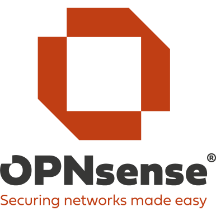We would have to do testing with OPNsense in an environment doing pen tests using cybersecurity tools that are available to pen test and see what happens. Because I am not in the IT group, and this is not our focus anyway, we have not done this bench testing, benchmarking, firewalls, or whatsoever, on-premises or not, all versions, hardware related, software firewalls.
With OPNsense, I find that you have to actually worry about this. There are two opinions on this. If I were an IT person, I would say it is fine, but I am not. I am an engineer. When I look at this IT stuff, in my opinion, this is in today's world completely overrated for what it is supposed to do. The fact that it is public makes it just not safe. And the rest is just a game. Firewall A, B, C, D, E, F, G, standard 1, 2, 3, 4, 5, 6, 7, 8. It will never be safe as long as it is public.
You want a game changer, you have to make the networks private. And this has to run not through your little company, it has to run through the ISP. It is the internet community that has to handle this. I cannot predict it, but this public stuff over there is public. In the end, whatever is public-facing is not safe. I make sure I have backups in place. When something crashes, I restore as quick as I can.
I do not use OPNsense VPN features.
As a company, this is a big game that is being played. I do not appreciate this because I am actually a chemical engineer and I want to focus my energy on how to make products with better quality, more efficient, using less energy, less raw materials, and so forth. Here you are stuck with running a game just to get simple communications up safely because it is on the public internet, which makes absolutely no sense. Instead of being a boon for remoting and productivity enhancement, I think we have reached the point where it is the opposite.
There are many ways down the road I see that will happen, probably some private type of networks that businesses get from the ISPs, private connectivity, so that you can clearly separate what is public and what is not. All you see happening and this patching up is IP version 4, NATting, PATting, it makes no sense. We try to keep things isolated as much as we can. Whenever it comes to a business-related solution, we will always go with a provider. We are actually outsourcing it; we are not doing it ourselves.
My rating for OPNsense is 5 out of 10.
